Safety certified
COR certification Pg. 18

Leading Edge Misleading news Pg. 22
FOCUS Kitchen and bath Pg. 24

Safety certified
COR certification Pg. 18

Leading Edge Misleading news Pg. 22
FOCUS Kitchen and bath Pg. 24
Andrew Lambden looks back at 30 years of success with Terra View. Page 12
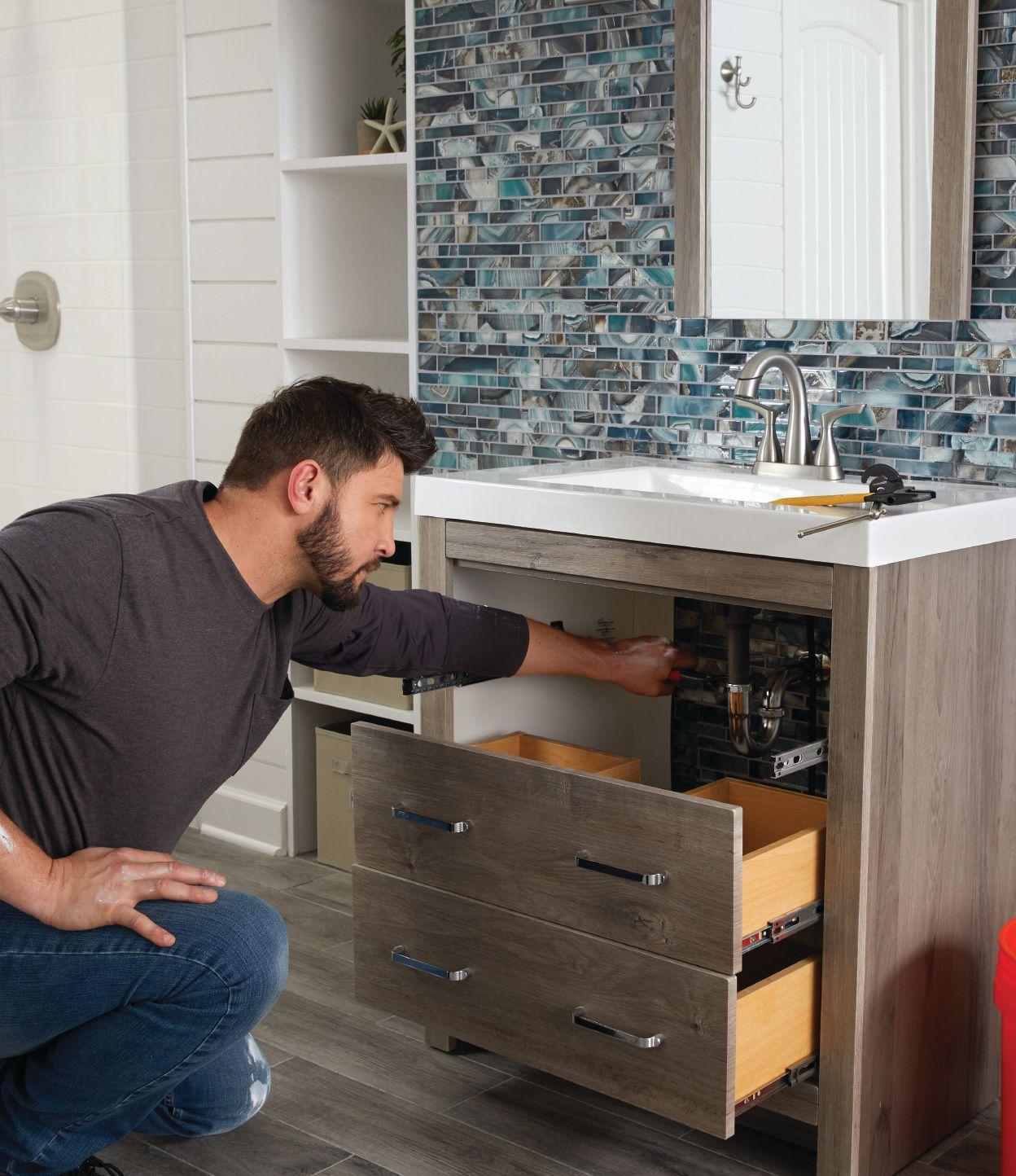


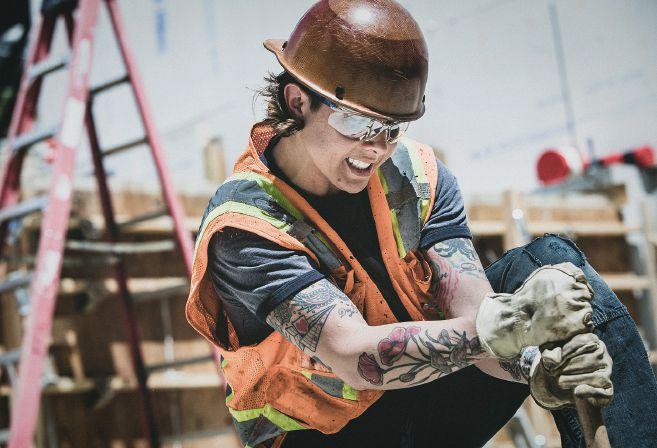



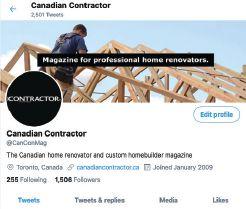
Flip through the digital versions of your favourite past issues of Canadian Contractor. Look for our Digital Magazine section at canadiancontractor.ca.
In Episode #18: It’s Easy to be Greener, Ruth Talbot of Natural Resources Canada joins the podcast to update us on the Greener Homes Grants announced in the last federal budget. What they are, how customers can get them and how they can help you sell higherperforming home designs.
Canadian Contractor’s video library holds hundreds of helpful tips, insightful interviews and revealing profiles with prominent professionals. Tune in today!
Follow @CanConMag or look us up on Facebook to add Canadian Contractor to your daily diet of online interaction.



Was on a panel hosted by the tireless Mike Wood of Ottawa Special Events, an event rental operator who has transitioned to advocating on behalf of small business during the pandemic. The discussion was pure gold – frankly we could have done another two hours. If you want to view a recording of it, reach out to Mike at mike@ottawaspecialevents.com and he’ll send a link to anyone interested.
As is often the case, the questions were sometimes more revealing than the answers. Just about all of them revolved around how to gain the attention of the right people in government. My sense was that many of the attendees had had the frustrating experience of trying to contact decisionmakers and being stonewalled with automated email responses and silence. Can you relate?
Part of this is, as one attendee put it, a problem of a million bees trying to get into one tiny hole. Every official gets more communications than they could ever expect to handle, especially these days with so much changing and so much not working to the satisfaction of business. But there were many practical tips offered for how to proceed that I’ll try to relay here.
The first of these was simply a web address: infogo.gov.on.ca. That’s the online directory for the Ontario government that not only lists all the various ministries and their departments, but also provides phone numbers and email addresses for the ministers and staff. All provinces have something similar. The panelists recommended trying to reach assistants in charge of scheduling in order to try to set up calls or meetings with MPPs and ministers, though they cautioned that ministers are pretty hard to nail down.
The panelists recommended getting your ask toward the top of any email message and leading with your story: who you are, why the issue is important to you and how it has impacted (or will impact) you directly. Presenting solutions instead of just making complaints is important, as is a generally polite and respectful tone. Venting of emotions and grand theories is discouraged. When thinking about your “ask,” one panelist suggested envisioning a Venn diagram. One circle is your interest, another circle is the public interest and the third circle is the candidate’s political interest. For best results, your proposed solution to the issue you are raising should fall in the middle where the three circles overlap. And, as always, brevity in your communications is the best policy.
The panelists recommended focusing on your local MP or MPP rather than going to ministers right away. After all, they are the ones who need your vote and the votes of your friends, customers and employees.
If you’re having trouble getting your representative’s attention, or the response is consistently one you don’t like, you can go to the media. This is a bit like putting away the rifle and pulling out a cannon. It’s more powerful, but can cause collateral damage. The panelists recommended local print media saying it’s where all the TV and radio producers get their ideas anyway. Speaking from experience, I can tell you journalists are eager to hear your experiences and opinions and are usually a heck of a lot easier to reach than politicians. But beware: if you’ve succeeded in building a relationship with a politician and are perhaps involved in consultations with them, talking about them, their positions and any open proposals without their blessing will turn you into an enemy very quickly (unless it’s in the most glowing terms). Once you’ve gotten to that stage, media silence is best. cc

By Patrick Flannery Editor
” The problem is one of a million bees trying to get into a single hole.
The Canadian Federation of Independent Businesses has made a new resource document available to members to assist them in developing a policy regarding COVID vaccination for staff. The template is not intended to provide a framework for mandating vaccines for customers or staff, and the CFIB explicitly recommends against doing so in its release. The CFIB announcement follows:
Our members are frequently contacting our business advisors about vaccination in their workplace. We are pleased to share our new vaccination policy template that we developed in collaboration with lawyers from Sherrard Kuzz. It’s a detailed resource to help you discuss vaccination issues with your staff – without spending thousands on professional counselling. As vaccination is a complex topic, this policy can help you have this conversation sensitively and implement the right health and safety protocols for your business. It doesn’t mandate vaccination for your
employees, but rather outlines your expectations as well as the employee’s rights.
As a rule, CFIB does not comment or advocate on medical issues. However, considering the many legal issues involved (health and safety, human rights, privacy and employment and labour relations), we felt it important to give you this tool to mitigate risks to your business and avoid fines, lawsuits and/or forced closures. CFIB recommends that you use caution in considering any policy that would require employees or customers to be vaccinated. As governments themselves are reluctant to mandate vaccines in settings like hospitals, a small business could face an expensive human rights or privacy-related lawsuit if it were to implement one. You can find it in our members-exclusive resource library that houses a variety of templates and documents every business owner should have, including:
• *New* Vaccination Policy
• Drug and Alcohol Policy
• Employee Handbook
• Social Media Policy
• Anti-Harassment and Anti-Bullying Policies
Annex Business Media is proud to announce Alex Mackenzie has joined Canadian Contractor Alex takes on the role of associate editor as Sukanya Ray Ghosh steps into her new role as editor for Manufacturing Automation and Pulp & Paper Canada. Alex graduated from Northern Michigan University in 2011 with a BS in psychology and subsequently earned their MA in English in 2017 from Southern New Hampshire

The sale of Novo Building Products from Blue Wolf Capital Partners to Hardwoods Distribution was completed on July 31. Based in Langley, B.C., HDI is one of North America’s largest wholesale distributors of architectural building products to the residential and commercial construction sectors. HDI operates a network of 70 distribution facilities.
“We’re excited about joining the impressive HDI family of distribution,” says Jeff Leys, president and COO of Novo Building Products. “This is a time of growth at Novo Building Products and this recent acquisition helps strengthen us in the marketplace.”
The intent for acquisition was originally announced on June 23 with Blue Wolf.
University. They bring with them diverse editorial knowledge and experience in the B2B publication sector having worked as associate editor for Allured Business Media’s Perfumer & Flavorist magazine from 2019 to 2021. One of Alex’s primary focuses in this role is to revitalize Canadian Contractor’s social media presence across all platforms.
White Cap Supply Canada reports it has closed on the previously announced agreement to acquire National Concrete Accessories Canada, an Alberta corporation. NCA is now part of White Cap Supply Canada, which is comprised of Brafasco and Brock White Canada, forming a single Canadian business. This combined business, which is intended to mirror the long-term success of White Cap in the United States, will be led by Vasken Altounian as business unit president and Neil Fast as regional vice-president, and will report into Alan Sollenberger, president of White Cap.
“We are very excited about this milestone as it allows us to accelerate what we set out to do when the Brafasco and Brock White Canada teams first combined on October 19, 2020,” said Altounian. “White Cap Supply Canada strives to become the leading construction products and services distributor in Canada that is best known for an unmatched commitment to living by our company values and to providing exceptional service for our customers.”
“I am excited for the new opportunities this acquisition will provide our White Cap team and we look forward to growing stronger thanks to the incredible talent joining us from NCA,” said John Stegeman, CEO of White Cap. “The depth of products, services, and knowledge that NCA brings in concrete forming and accessories complements Brafasco’s specialty in fasteners, tools, and safety products and BWC’s portfolio of building envelope, concrete accessories, masonry, and geotechnical products.”
This acquisition is the first for White Cap since becoming an independent company in October 2020.
Ontario’s Home Construction Regulatory Authority (HCRA) has charged Ideal (BC) Developments with 10 counts under the Ontario New Home Warranties Plan Act and one count under the New Home Construction Licensing Act, 2017. This is the first such action by the HCRA, which began operations in February of this year. Ideal (BC) Developments is not licensed to sell new homes in Ontario, and the HCRA investigated after receiving complaints that the company had illegally entered into sales agreements.
“Selling new homes without a licence is a serious offence,” says Wendy Moir Acheson, the HCRA’s CEO and registrar. “Illegal activities can represent high risks –obviously hurting consumers, and also creating an unfair marketplace.”
Ideal (BC) Developments is charged with 10 counts of alleged illegal vending – entering into an agreement of purchase and sale without a licence and without being registered with Tarion Warranty Corporation. The 11th count is for allegedly failing to produce evidence during a search warrant. The charges relate to freehold properties on Bostwick Crescent in Richmond Hill, Ont.
“The HCRA is determined to protect Ontario consumers from illegal and unethical conduct,” Moir Acheson explains. “At the same time, our message to new home buyers is: make sure your builder is licensed with the HCRA before you sign an agreement of purchase and sale.”
To support continuous enhancement of consumer
protection and home buyer confidence, the HCRA discloses any charges laid by the registrar. This is an improvement from previous versions of the Ontario Builder Directory, which only displayed convictions. Furthermore, all regulatory activities and enforcement are disclosed on HCRA’s website.
“The Ontario Builder Directory – hosted by the HCRA –is a vital resource for confirming that a builder or vendor is operating legally, as well as providing other background detail to help people make these important decisions”, says Moir Acheson. “We strongly believe that transparency regarding charges is important and helpful for consumers when evaluating and researching a builder.”
HKA has significantly enhanced its construction consulting capabilities in Canada with the addition of nine executives across its Montreal and Calgary operations. With the new hires, HKA now employs 37 construction consulting executives in Canada, including nine testifying experts, making it one of the largest construction claims practices in the country. HKA’s growth has coincided with its expansion into construction advisory services, providing full project lifecycle support to companies participating in large capital expansion programs. Its growth also comes as Canada’s federal and provincial governments have budgeted nearly $500 billion for infrastructure and institutional capital expansion.
“As our growth demonstrates, HKA has made the Canadian construction claims market a top priority,” said Rick Moffat, HKA partner. “We welcome our new team members and look forward to their contribution.”
“The addition of these professionals expands our ability to support clients throughout Canada. Their skill sets complement our existing team and add depth to our Montreal and Calgary operations,” said Frank Giunta, HKA partner and head of Americas.
Headlining the new additions is Maged Abdelsayed, who joins as partner based in Montreal. A professional engineer with 35 years of experience in the construction industry, Maged has provided dispute management and claims-related expertise on Canadian and international construction projects. Maged has also served as an expert witness before various courts and arbitration panels in Canada and the United States in disputes relating to project delays, labour productivity losses, the impact of changes on construction work and damage assessment. Maged was recently featured in Who’s Who Legal as a top construction delay and quantum claims consultant.
In our previous issue, The Dilemma urged you to offer solutions to Allison on how to deal with an employee who was catcalling from a jobsite. Here are some great responses and advice that came in. The best response is, as usual, covered in this issue’s The Dilemma section.
The focus should be on improving relationships rather than letting it turn into a man versus woman battle, suggests Michael Janzen.
It is so easy in relationships between men and women for issues to become men versus women. We all naturally defend ourselves, our position and our rights when we should rather practice consideration, kindness and respect for one another. These are the things that improve relationships. Allison is in a leadership position and the first thing she should do is send an apology to the lady that was offended by her employee. Regardless of what actually happened, the way it made the lady feel is what counts. Allison can also use this situation to create awareness in their company of public perception of their company on this issue. She could simply share the complaint with her whole company, maybe without singling out anyone, and remind them all that respect toward others, regardless of gender, is important to her. She should surely be slow to pass judgment on her employee. She has only heard one side of the story from a stranger and she should definitely enter into any discussion with her employee that she certainly knows quite well, by giving him the benefit of the doubt. The offended lady could have issues in her past that make her super-sensitive, or she may be a past acquaintance of the employee that is looking to get him in trouble because of something in their past. Of course, this does not excuse disrespectful action and if the employee admits to such action, Alison should feel free to tell him that. Any type of hasty punishment for the incident will most surely generate pushback and retaliation from the employee and could easily end in an unpleasant separation. Above all, Alison should do her best to keep this from becoming a man versus woman power struggle as it is seldom that either comes away from those as a clear winner.
– Michael Janzen
Cindy Brygman suggests that Allison should include mandatory training on workplace violence and sexual harassment on a regular basis.
What Allison should do is speak privately to the individual and explain the seriousness this incident is. She should allow for a warning since it looks like her family’s
construction business has never provided the staff with educational seminars. An apology should be sent to the victim so she is aware that this is being dealt with. She then needs to get together with HR to provide the necessary training and mandatory classes for her staff to be aware of workplace violence and sexual harassment included with her WHIMIS. This is something she should do every couple of years for new staff joining their company and reminders for the others.
– Cindy Brygman
Allison should deep dive into the actual incident and find out all sides of the story and then take the necessary action, says Jennifer McCleneghan.
After reading “Misogyny Mayhem” I felt compelled to respond. Like Allison, I am a female involved in running a construction business and I have had to deal with similar problems over the years. Because Allison has never had a problem with the accused employee, and not knowing the person who lodged the complaint, Allison must tread carefully until she understands the situation further. Perception is really what is at play here. The definition of perception is “the ability to see, hear, or become aware of something through the senses.” Because each individual perceives differently based on his or her own personal experiences, an event witnessed by two different people may appear to not be the same event at all! Firstly, Allison must contact the complainant and get specific details about what happened. It is important that she not agree or disagree with the complainant but should try to get a very thorough understanding of what was experienced with a promise to follow up once she has completed her investigation. Secondly, Allison should meet with the employee in question to get his explanation of events. Perhaps what the walker heard was not in fact what was said. It is possible that the intention was to compliment the walker and was not done to degrade or sexualize her in any way. The employee needs to be made aware of how the comment was perceived and that it was troubling enough that she called the company to complain. Hopefully, once aware of the discomfort that his comment (or perceived comment) caused, the employee would reassure Allison that this behaviour will not be repeated. In order to prevent a reoccurrence, it is important that Allison address this issue for the company as a whole,
as well as all employees. A mandatory employee meeting or workshop on sexual harassment should be scheduled and a policy created that is signed by each employee. It is important that employees understand that this training and policy is intended to protect them and the company from suffering any embarrassment or financial hardship. Employees need to be made aware that harassment is a serious issue that can lead to criminal charges and dismissal and that there is zero tolerance for it in the workplace. Allison alluded to the fact that “locker room talk” was a real thing in her workplace. This complaint opens the conversation on sexual harassment, allowing Allison to implement policies and training aimed at eradicating this damaging culture, and make it more comfortable for women to advance in the company and to work alongside their male counterparts. Companies that effectively empower all employees are the most successful. Once the training is completed, Allison should contact the complainant. She should thank her for bringing the issue to her attention and explain to her that as a result the company has reviewed its harassment policy and made it mandatory that each employee attend a workshop to educate them about what constitutes harassment and the repercussions of such actions.
– Jennifer McCleneghan
Go the extra mile
Connor McCormack of Emco in Squamish, B.C., has gained a customer for life with his act of amazing generosity.
My name is Robert Szachury. I’m writing this as a feel-good piece kind of. I had a situation with one of my wholesalers that I’ve been dealing with for two decades plus. We had a issue with a quite expensive product and the manager Connor McCormack went above and beyond to save the day. This is a warranty issue with a company that was declined. The manager of the wholesale Emco in Squamish (McCormack) voluntarily said that he would pay for half of the product. It was not his fault, nothing to do with him, really that he didn’t have to. I’ve already talkED to the president of Emco, Rick Fathom, and conveyed my sincere appreciation for this magnanimous generosity. The reason I’m writing the letter is the fact that someone is willing to literally take money out of their own pocket with integrity to cover an issue that’s not their own is the point. It just speaks to a level of integrity that you don’t see in business that often these days. And I’m not talking about a coffee card for $100 , I’m talking thousands. Anyway, in closing, just wanted to tell you that in business there are still people with a phenomenal amount of integrity. I almost cry thinking about the logistics behind this whole scenario. Hey, there’s got to be a be a story in there somewhere. Thank you, I appreciate it.
– Robert Szachury
Alan sees culpability for governments in allowing the use of asbestos as a building material and suggests a solution. In my condo we have spent more than $500,000 so far on asbestos mitigation measures and we have only scratched the surface of the problem here. Much more asbestos is still intact in the walls, ceilings and floors. We deserve a rebate! Perhaps a certain percentage per year until all the funds are returned. Only seems fair since the federal government caused this problem in the first place while owners like me had no prior knowledge of asbestos in the building. The government really blindsided us on this one.
– Alan Elliot
Phil liked architect Brad Green’s solution for keeping pipes from freezing in an unheated crawlspace, but has more questions about how to execute it. To help Phil out, and to read the original article, check out “Keeping pipes outside of a cottage from freezing in winter: option 2” on canadiancontractor.ca.
I am also interested in the copper wire coil at ice level. Any idea what gauge wire, solid or stranded wire, and how much loose tail to leave? Regarding the drain down action, is the internal check valve removed from the pump, or is there a diverter installed in the line above the pump? I have heard many discussions about the pump being damaged if you remove the internal check valve and allow it to spin backwards. Any more discussion on this would be greatly appreciated.
– Phil Dunkley
Nicole Kershaw fears her energy advisor for the Greener Homes grant may have cut and run. Anyone else hearing stories like this?
I jumped at the chance when I heard of the rebate with greener home energy for up to $5,000, plus $600, plus GST . I got my home energy evaluation from a legitimate company. Or so I thought and paid the initial $400 plus GST. Now I cannot get any response from the advisor or my energy report. How long should it have taken to make a report after the evaluation? I somehow think I got screwed out of this money.
– Nicole Kershaw
The Voices section in the magazine selects readers’ comments that are sent through emails or posted online. To be featured here, please share your opinions about the different subjects, topics and ideas discussed on canadiancontractor.ca.

Terra View’s mission statement is to develop communities that will stand the test of time.
Terra View Custom Homes is implementing advanced technologies and sustainable, green building practices in its projects.
By Sukanya Ray Ghosh
On April 23, 1991, Terra View Homes in Guelph, Ont., began its journey in the home-building industry under the leadership of its founder and CEO Andrew Lambden. The mission statement that Lambden set for Terra View Homes at that point was that it would develop communities that will stand the test of time, with an emphasis on architecture, quality craftsmanship and energy efficiency. Terra View and its team of 15 professionals adhere to this commitment even today.
Five years later, in 1996, Terra View Custom Homes was born. When Lambden and the company’s president, David Brix, saw this niche demand in the market, they decided to drive the

Terra View’s team consists of purpose-driven professionals who are heavily involved in the
custom homes segment of the company to success. Terra View’s purpose-driven approach is what helped the company capitalize on this opportunity in a booming industry of cost competitors.
“Building upon our inherent desire to offer a distinctive, fresh perspective in our home designs, without sacrificing quality or service, allowed us to differentiate and evolve into the industry leader we are today,” says Lambden.
All of Terra View’s team members work in the company’s custom homes segment. The team consists of longstanding dedicated employees who are heavily involved with every custom client throughout the building process.
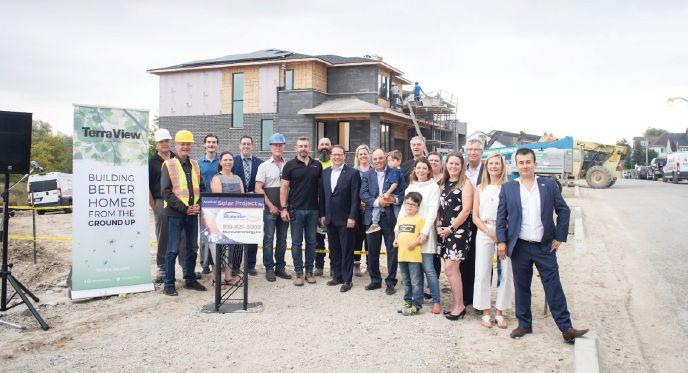
“Each member of our team greatly contributes to the success of the company and satisfaction of our custom home clients. From blueprints to colour selections, our on-staff professionals in architectural and interior design are on hand to offer advice and walk each purchaser through the customization of their new home,” explains Lambden.
The year 2021 is a major milestone for the company as it is celebrating its
30th anniversary. Terra View attributes this success to its forward-thinking leadership, long-tenured employees and dedicated trade partners.
Over the years, the company has designed and built several custom homes, majority of them being teardown rebuilds.
Lambden notes that such projects come with their own set of unique

CEO Andrew Lambden priases his team for their patience and cooperation when working on difficult projects, such as the renovation of historical homes.
challenges since they are built in existing residential properties that are sometimes also located in historic districts.
For the Terra View team, a custom home built in an older part of Guelph is one of its favourites. It also happened to be one of the most challenging projects that the team has worked on.
“We had to work closely with Heritage Guelph to be granted permission to demolish the existing 120-year-old home. There was a significant amount of opposition from the neighbourhood,” recalls Lambden.
To uphold the heritage of the home, Terra View created an historically accurate clone from the outside, down to the proper Ontario-sized brick with replicated details and stone veneer foundation. At the same time, the home is now a very low-energy-consuming Energy Star-rated and comfortable home.
Terra View’s custom homes team enjoys working on sites that have unique environmental and cultural aspects to them. They have taken up projects that are located in desirable parts of the community, in natural spaces and unique urban areas.
Every one-of-a-kind custom home comes with its set of unique challenges, according to the Terra View team. However, these challenges have allowed them to learn, grow and improve over the years. They are now better prepared to tackle issues and resolve them quickly, easily and without undue cost or stress.
Handling relationships with home neighbours in tight lot situations when doing tear-down builds is a challenge that the team often faces. Another challenge is working through servicing logistics in existing neighbourhoods where old trees need to be retained. Many trees are hard to access and
Terra View places an emphasis on architecture, quality craftsmanship and energy efficiency.
also involve cutting through red tape. Unexpected costs and delays with materials and city permits are common too.
Lambden says the team has learned that patience and working through hurdles with city staff and the community are essential. Additionally, he says, it has highlighted the importance of optimization when approaching custom home builds.
When it comes to creating custom homes, the Terra View team understands they need to be built with people in mind. The home owner not only wants a quality home but also desires a sense of community and belonging.
The Terra View team builds on

the vision of the clients, following a collaborative approach throughout the process. The communication channel is always kept open so that the client is able to share inputs at every stage of building their dream home. Several challenges often come
up when building custom homes in existing neighbourhoods. Terra View’s team members use their years of experience to navigate them.
Terra View focuses heavily on attention to detail when designing and building custom homes. The company

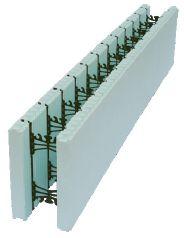
The Nudura line of insulation products provide solutions for maximizing energy efficiency, providing greater protection from the elements and minimizing noise, while providing a comfortable home for your family. With a full range of products to meet every insulation need, from our Integrated Series for roofs and floors to our Nudura ICF Series for your homes structure, these proven products will provide you with the home you have always dreamed of, with added benefits over traditional construction. Explore the Anatomy of a Nudura Home.

offers homeowners design innovations, state-of-the-art technology and tomorrow-friendly features. As a result, aesthetics is not compromised for the sake of functionality.
“We emphasize the green building practices that we are known for in our custom builds, resulting in highperformance home functionality and even constructing some to a Net Zero standard,” notes Lambden.
For Terra View’s team, creating custom homes is rewarding. The focus is always on listening to the clients and working closely with them throughout the design process. This is to ensure that the homeowners are happy with the end result and that their dreams are achieved within their budget.
Terra View’s custom home building process begins with a pre-consultation session with the client. During this meeting, the team understands the client’s vision, informs them of the up-front costs and identifies any potential pitfalls.
The next step is planning the design of the new home. Terra View meets with the client several times to refine the plan to accommodate their needs, such as lot location, floor plans, interior design, exterior aspects and landscaping.
Pricing is a vital part of the process. Terra View prices the home after including the client’s needs. When the budget is reviewed by both parties, adjustments are made if necessary by modifying the plan or selections. The company begins the construction once the pricing is finalized. However, throughout the build, the client is still able to offer inputs.
Terra View’s job does not end with the completion of the house. Its team also assists in making the closing and move-in process as simple and efficient as possible.
“We are always on hand to provide support with any final changes and while helping our clients get settled into their new home,” says Lambden.
Terra View has been a green builder for three decades, specializing in using sustainable, green building practices.
“We go as far as implementing our green building practices into the design and construction of our custom homes. We proudly provide our custom homeowners with a healthier home design that incorporates advanced technologies, environmental efficiencies and green building innovations,” says Lambden.
The team incorporates the key elements of Energy Star, GreenHouse,
Built Green and LEED into its custom builds. For all of its custom homes, the company uses building materials such as low-emission quartz countertops, low-VOC cabinets and wood finished off-site to limit gassing. This results in lower emissions from the construction process.
Terra View has received several accolades during its 30-year journey. Most recently in 2021, Terra View was recognized by the Guelph and District Home Builders’ Association Awards of Distinction as a winner in the following categories: Green Builder of the Year, Most Outstanding Production Home Design and Most Outstanding Custom Home Design. Terra View also received the 18th Avid Gold Award for highest customer ratings in Ontario in the Small Volume builder category.
Home building associations have recognized Terra View for its custom home designs multiple times. Additionally, city staff have lauded the company for its efforts in designing custom homes that naturally fit within the existing community.
“Building resilient custom homes that also meet Net Zero Ready standards is an achievement in itself. But to fulfil the dreams of our clients at the end of the day brings us the most satisfaction,” says Lambden.
On its 30th anniversary, Terra View is looking forward to the next 30 years.
The company plans to continue to build upon its strengths, including embracing sustainable construction and green building practices to help combat climate change, maintaining homeowner and customer relationships, implementing innovative building solutions and technologies and living its vision of building homes. For its custom homes segment specifically, the company intends to maintain and enhance its team of dedicated staff. Terra View plans on keeping ahead of changes and remaining on the cutting edge of technology and building science. It wants to ensure that its future custom homes meet highest standards of efficiency and durability. cc
If your company processes higher dollar amounts, improve your cash flow by receiving business payments with real-time confirmation. Interac e-Transfer† for Business, from Scotiabank, allows you to simplify your payment processes by sending or receiving up to $25,000 per transaction with just an email address or account number.1
Completely transform your business payment processes in an instant.
For details, visit scotiabank.com/interacforbusiness or contact your Scotiabank® Relationship Manager.
COR certified companies send the message that they take safety seriously and therefore fare better in the labour market.

By Treena Hein
Each year in Canada, the Certificate of Recognition safety program becomes more well-known and a little more widespread in the construction industry, not just for its many benefits but because it’s becoming a standard expectation on larger projects. Those smaller contractors who subcontract on larger projects or work for home-building companies – or even those that only do their own projects – may want to seek certification to reap the many benefits.
But before we get into benefits, let’s take a quick look at the program. COR accreditation verifies that companies are meeting national occupational health and safety standards. It began in Alberta more than 20 years ago. It’s overseen by the Canadian Federation of Construction Safety Associations but implemented by provincial agencies such as the BC Construction Safety Alliance (which also serves as the current contact for CFCSA inquiries.)
COR aims to provide employers with an effective safety and health-management system to reduce safety incidents, accidents and injuries as well as their associated human and financial costs. Its effectiveness at lowering injury rates has been proven though recent independent impact evaluations
in B.C., Alberta and Saskatchewan conducted by researchers at the University of British Columbia School of Population and Public Health in collaboration with BCCSA and WorkSafeBC (see CFCSA website for the research briefs).
To achieve COR certification, companies must demonstrate many aspects of workplace health and safety, culminating in an external audit, including policies and procedures, training, hazard assessment, emergency response and incident investigation. Companies must train their own internal auditors to ensure compliance between external audits (generally every three years).
The benefits of COR certification are many for residential contractors and homebuilders, including lower annual insurance premiums. In Alberta for example, COR (or SECOR, Small Employer COR) qualifies employers for Workers Compensation Board premium rebates of up to 20 percent. And in B.C., with COR certification, a company scores a 10 percent rebate from WorkSafeBC.
In Ontario, COR is being migrated to COR 2020 to help
workplaces qualify for financial rewards and recognition from the Ministry of Labour, Training and Skills Development and the Workplace Safety and Insurance Board. COR2020 has a new format and the audit tool has a reduced number of elements.
COR-certified contractors might also have an easier time with recruiting tradespeople. “In an increasingly competitive labour market, where workers have more options for employment, they will choose to work for companies who have their best interests at heart,” BCCSA director of COR and injury management, Vernita Hsu, explains.
COR is also a practical way of demonstrating to customers and the public that you take safety seriously, adds Hsu. “COR certification makes a strong statement about a company’s commitment to protecting the well-being of workers and maintaining a culture of safety on jobsites,” she says. “Having a third-party audited system shows the world that someone beyond the company thinks your safety system is good.”
Beyond all these benefits is the fact that COR certification is becoming a requirement of doing business on larger projects. COR is now frequently used as a pre-qualifying and/ or condition of contract by both public and private project owners across Canada.
Adoption of COR has been very successful among residential contractors in Manitoba. The Construction Safety Association
of Manitoba began promoting COR among smaller contractors many years ago by offering practical resources, including associated checklists and guides. CSA Manitoba executive director, Sean Scott, notes that financial incentives definitely play a role in becoming COR certified, but they are only one of the benefits. “In 2020, we had about $2 billion in construction payroll in Manitoba and $3.5 million in prevention rebates provided to COR-certified employers,” he reports. “In 2019, severe injuries were reduced by 14.4 percent from the year before and that’s directly influenced by COR certification. It’s an established and creditable program that results in fewer time-loss incidents, improves morale and retention and provides a systematic approach to doing a job. It allows safety to become an integrated part of production, quality and efficiency.”
While the time to achieve COR certification will vary depending on the size and complexity of a contractor’s operations, Scott puts the minimum time at three to six months. The CSAM offers the required COR training courses every month, adaptable templates, personal consultation and more to ensure swift implementation. The cost is $775 for the required training and audit in the initial year of COR in Manitoba, and $550 for maintenance years. cc
21_1737_CN_Contractor_SEP_OCT_CN Mod: August 2, 2021 9:27 AM Print: 08/20/21 page 1 v2.5
A longer version of this article is available online. For the full version please search “Safety certified” at canadiancontractor.ca
ORDER BY 6 PM FOR SAME DAY SHIPPING
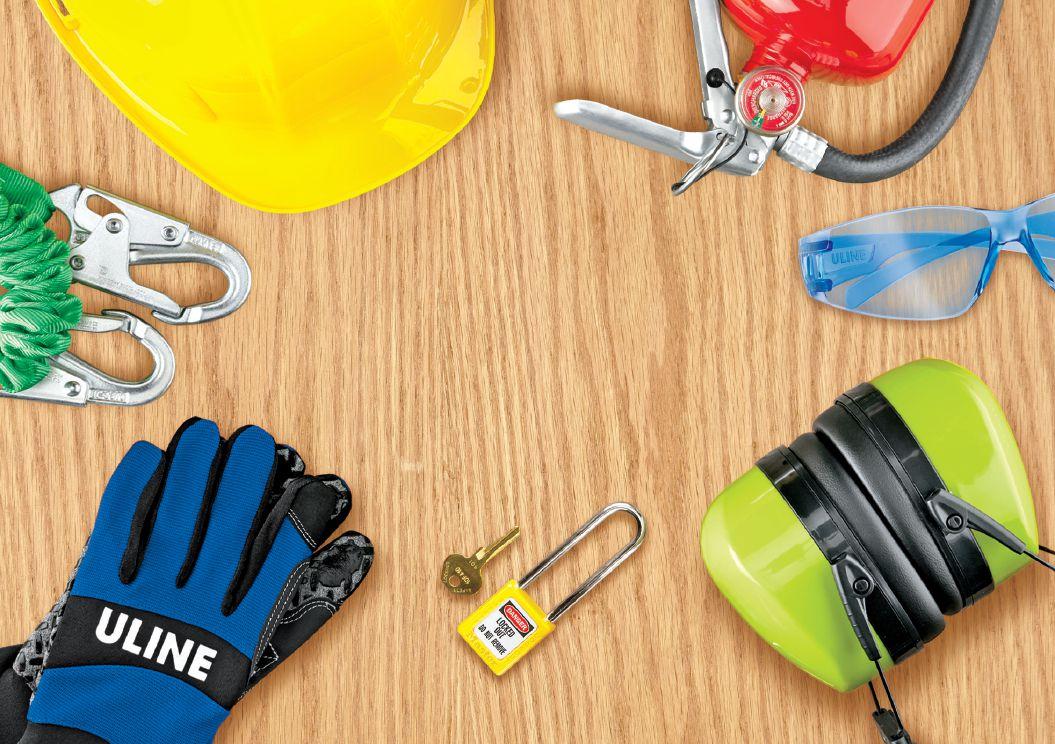

By Robin Skilling, Keen Utility
Thecurrent state of the economy shows an immediate need for workers following the COVID-19 pandemic, especially when it comes to the manufacturing and construction industries.
According to the government of Canada, between 2019 and 2028, about 700,000 skilled trades workers are expected to retire. Meeting the demand for anticipated projects will require the recruiting and training of thousands of additional skilled workers.
That being said, there is optimism around meeting these needs, as provinces and the federal government along with non-profit groups work together to encourage younger generations and untapped demographics to join the
trades. One of the demographics that is essential to reach is women. However, there are still systemic barriers that need to be addressed in order to successfully encourage women to pursue careers in the trades.
In order to meet this high demand and elevate women in the industry, safety must remain a high priority for businesses looking to fill the gaps. This means women need the right protective equipment for the job – and more importantly the right fit for the task at hand. For too long, women in the trades have needed to find workarounds for PPE designed largely for men. Gear and equipment such as boots, coveralls, goggles, gloves, respirators and even tools are mandatory for the jobsite. Despite this, many
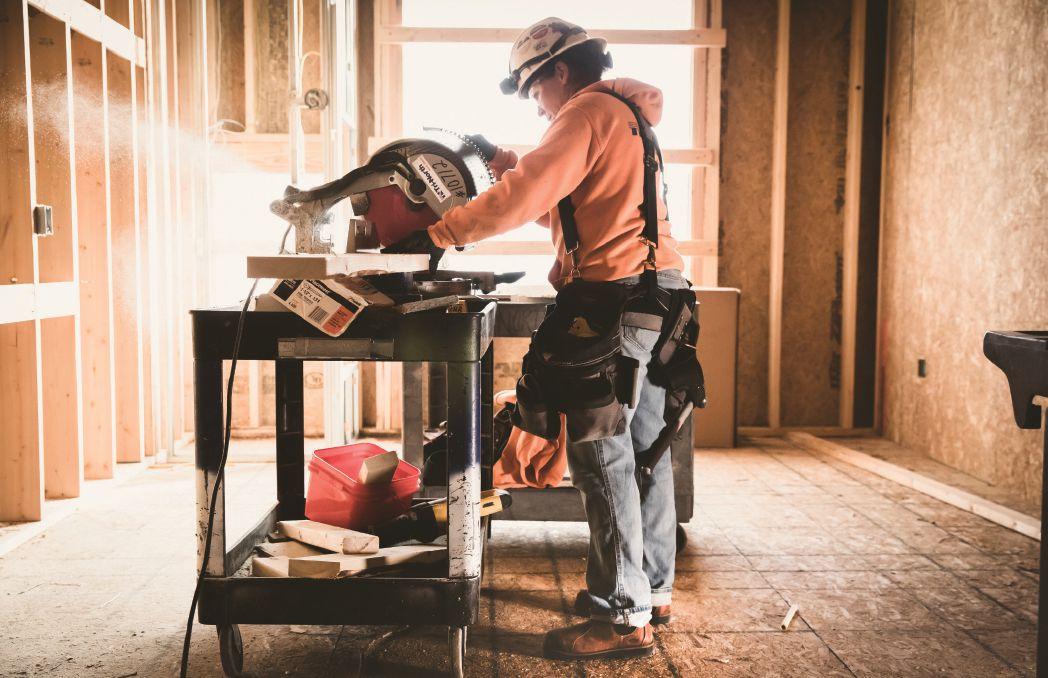
women may feel frustrated – and potentially unsafe – when using ill-fitting equipment. Keeping every employee on the jobsite safe is non-negotiable and can often be achieved by ensuring proper fit when it comes to PPE.
Although Canada has experienced a small rise in the number of women joining the skilled trades, there is certainly room for improvement. In 2018, Statistics Canada reported that women accounted for roughly 47 percent of the national workforce. Of that, just 12 percent were in construction, and only an estimated four percent working in on-site jobs with the remainder holding off-site roles.
According to the Canadian Centre for Occupational Health and Safety, PPE is the last line of defense for a worker when it is not possible to eliminate a potential workplace hazard. However, if personal protective equipment does not fit properly, it is unable to be effective. Men and women are built differently (that is, size, height, shape and so on), so why should women be expected to wear men’s workwear on a jobsite?
CCOHS states: “All workers have a right to a safe workplace. PPE designed for the dimensions of an average male worker means that female workers may be forced to rely on gear that is too large or disproportionate. From headwear to footwear, ill-fitting PPE can cause safety hazards, reduced dexterity from oversized gloves, hard hats that fall off, baggy coveralls catching on equipment and trips and falls because footwear or shoe covers are too large.”
With this in mind, a 2016 study of female construction workers in the American Journal of Industrial Medicine found a majority of women reported fit problems with many types of PPE including gloves, harnesses, safety vests, and work boots. The general complaint was that the equipment was too large to be worn effectively.
Women in the market for safety boots or shoes should seek out brands that design and fit their products for the specific biomechanics of a woman’s foot and a women’s-specific fit will help to lay the foundation for a better-performing work boot.
Beyond fit, it’s essential to choose a safety footwear that satisfies the proper industry standards. This may include safety toe caps, electric shock-resistant rating and metatarsal guards, among other requirements. In today’s market, some of the most important changes to safety footwear has involved the innovation and advancement of materials to improve fit and functionality.
Other material advancements have bridged the gap between trades and trends. New materials such as nonmarring, high-tensile-strength fabrics bring an athleticinspired breathability and functionality to the safety market. This has led to the ability to create sportier, more sneaker-like silhouettes. Comfort materials and advanced
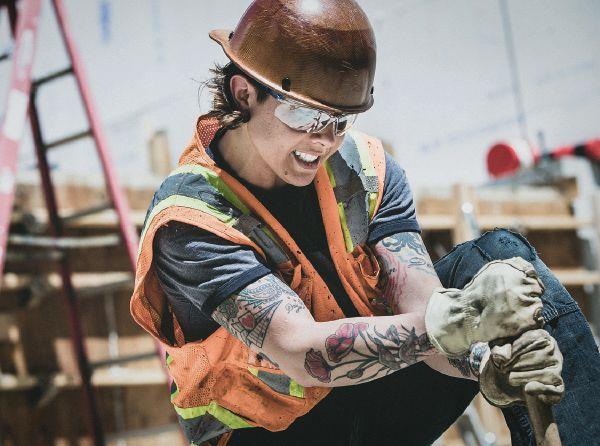
Innovation and advancement of materials in recent years have contributed to improved fit and functionality of PPE gear.
compounds further add the cushion, support and energy return needed for long days on hard surfaces. When it comes to finding the best fit for footwear, workers should try on shoes towards the end of the day when feet tend to be more swollen and at their largest. This allows for a better fit from start to finish of the work day. Both feet should be measured when shoe shopping as most feet are not the same size. Workers should also bring a pair of socks they would typically wear with their boots. Socks should provide cushioning and ideally be made of a moisture-wicking material like Merino wool, which offers natural antimicrobial keeping feet stink-free and dry. A smart sock choice can also prevent foot problems like fungal infections or blisters, which form from moisture being trapped in the sock.
Now is the time for manufacturers and purchasing managers to invest in recruiting women to the skilled trades. That starts with creating a safe space for women to work –including proper-fitting PPE. By providing women with the safety equipment fit for them to tackle any job, we can better outfit the future of the trade industry in Canada. It is up to each business and work crew to set the bar for women’s PPE high and ensure that all employees feel safe and empowered to take on any task at hand. cc
Robin Skillings is the senior global marketing director for Keen Utility. In her tenure at Keen Utility she has spearheaded the “Tradeswomen Tested” program, enlisting some of today’s leading female tradeswomen to test and advise in the development of future women’s-specific safety products for the brand.
A longer version of this article is available online. For the full version please search “Best foot forward” at Canadiancontractor.ca
Housing issues are apparently too complex for mainstream publications.
By Casey Edge

Whenthe BC Step Code was announced several years ago, a reporter said he had to battle to get the story in the newspaper. Apparently, the subject was considered too complicated for mainstream news.
Which is why publications like Canadian Contractor serve an important role. They try to make sense of complex industry issues. In keeping with this mandate, I have written on topics ranging from Step Code to restrictive zoning bylaws and costs on housing.
Canada’s housing industry is a complex, expanding universe of regulations and policies which are almost impossible to track without industry publications like Canadian Contractor. This content is rarely available in the mainstream media and, even if covered, is only partly right due to complexity and sometimes government spin-doctors.
An example is Canada’s misleading national housing price of $679,051 in June. B.C. and Ontario have prices significantly more than $679,051, but six provinces have average prices under $375,000.
Some B.C. municipalities are now fast-tracking, by ten years, the highest level of the BC Step Code – Tier 5 NetZero Ready. However, recent data show Net-Zero Ready homes are achieved at Tier 4. This means homebuyers are unnecessarily paying thousands of dollars extra because municipal councils believe Tier 5 is the only way to achieve Net-Zero Ready. Municipal politicians are not qualified to make these decisions, yet they have been enabled by the B.C. government. In doing so, the government misled the public into thinking each tier would be achieved responsibly in steps. BC’s Leap Code only adds to housing costs in the most unaffordable province in Canada.
The second issue involves municipalities demanding Community Amenity Contributions, an added housing cost in many communities across Canada. This is the practice of under-zoning neighbourhoods, to capture revenue for “density bonusing.” In a recent report on housing called Opening Doors, CAC’s were highlighted as an obstruction to affordability. The report says, “Zoning-based charges (CAC’s) discourage proactive zoning for more homes.”
“CACs are negotiated in exchange for rezoning
property to accommodate more homes. As a result, local governments that proactively increase zoned capacity or update zoning codes to better reflect anticipated growth and community priorities (as outlined in regional growth strategies and official community plans) lose that revenue opportunity. Indeed, local governments can generate CAC revenue by keeping zoning below levels that make redevelopment possible and selling additional “air rights’” through the zoning powers they have been delegated. Consequently, the additional costs, time, and uncertainty associated with the rezoning process – including their negative impacts on housing supply – persist.”
The report concludes CAC’s should be “phased out.” The challenge is that the B.C. government has a policy of municipal self-determination and the report’s recommendation would require them to step on municipal toes.
The CD Howe Institute previously exposed these regulatory costs as adding an average $230,000 to the price of a home in major cities across Canada.
If sound planning principles suggest a neighbourhood can accommodate a maximum density, then assigning a lower density and calling the higher density a “bonus” is misleading. The practice of “bonus density” adds to rising housing prices.
I have yet to see the recommendation on CAC’s covered in the major media. So, the public has no idea of real housing affordability challenges because it doesn’t suit major media coverage, and the content that is covered is often designed by government spin-doctors with terms like “Step Code” and “density bonus.”
The Victoria Residential Builders Association covers these issues in our blog and our weekly column in a local daily. (vrba.ca/building-industry-news)
But we are one association, and Canadian Contractor magazine can help drill down into these issues to a much wider audience across Canada. Especially when talking about Canada’s expanding universe of misleading housing news and regulations. cc
Casey Edge is executive director of the Victoria Residential Builders Association.
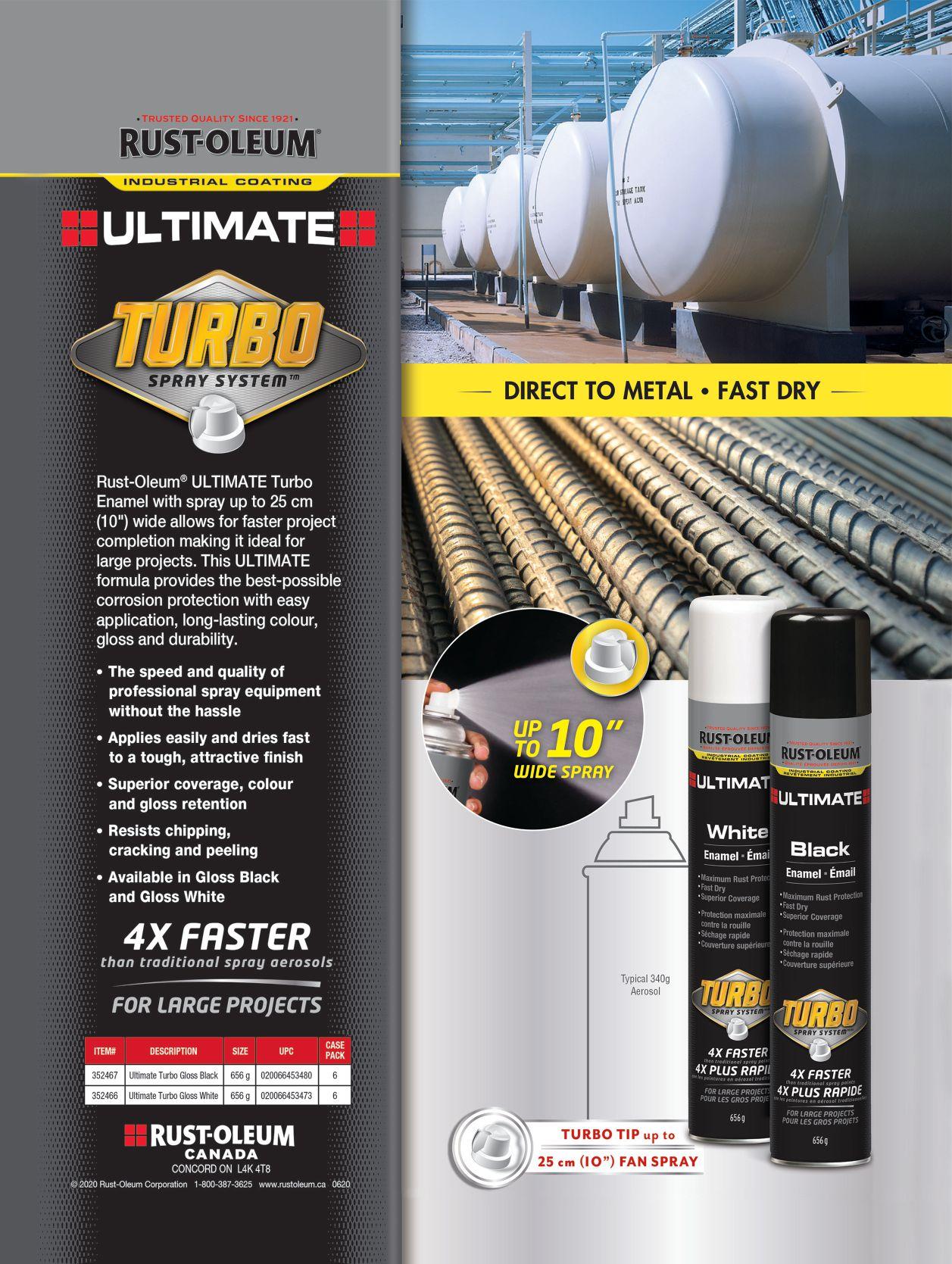
Stay up to date to integrate smart home appliances, pipe leak detection systems and more.
By Treena Hein
The “smart home.” It’s becoming common to see this concept pop up in news stories, ads and in personal conversations. In this era of being superconnected to our homes (and to our cars, family members, pets and so on), it’s therefore imperative that contractors stay up-to-date about installing smart home technology – or be edged out by the competition.
Indeed, according to Ian Bryant, senior director of strategic partnerships at CEDIA (the global trade association for companies that manufacture and integrate home technology), the outlook for smart home technology post-COVID is very positive.
General guidelines
Among the many considerations that Bryant says contractors need to keep in mind when installing smart home systems is the maintenance of proper environmental conditions. He asserts that installers and designers alike should be educated on the basics of how to support proper device function in normal conditions as well as extreme.
“Heat and moisture are the number one culprit for electronic failure,” Bryant explains. “It’s always recommended to have an MEL (main equipment location) for distributed or ‘wholehome’ electronics.” (Distributed and whole-home are just like they sound – distributed refers to individual applications and ‘whole-home’ refers to systems that run throughout a home, like security.)
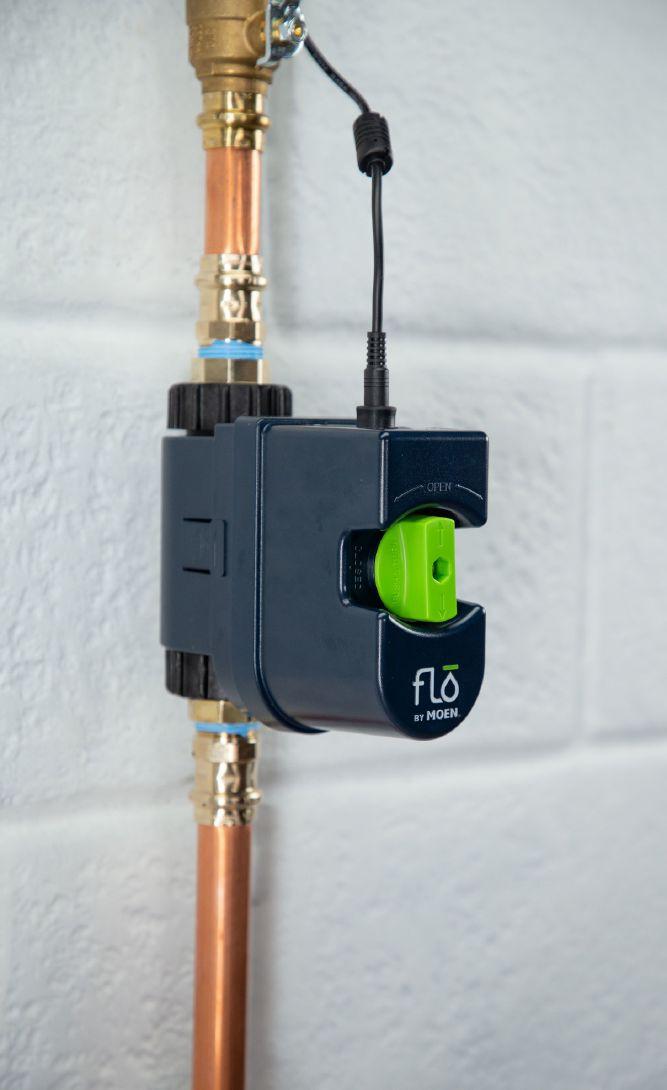
Installation of smart home appliances (fridge, stove, washer, dryer etc.) is similar to a conventional appliance, notes Olivier Tetreault, Signature brand ambassador at LG-One. For the company’s smart home Signature Kitchen Suite appliances, the Wi-Fi PCB is protected by a coating of resin against humidity.
Bryant adds that the only way installation of a smart home appliance might vary from that of a conventional is if the appliance has a hard wired ethernet connection (more on that later). “Most rely on Wi-Fi, so this is not an issue. And for even those that do, it’s very simple to plug in a data cable,” he says. “The difference is, after the install, getting it set up on the network, connected to a smart speaker system like Alexa or Google or a control system and then training the customer to get the most out of the features.”
Even before the suspension in winter getaways due to COVID, more and more vacationers wanted a way to prevent water pipes bursting in their homes due to electrical outages or other unforeseen circumstances during their time away. According to plumbing system manufacturer, Moen, water leaks in the home are one of the leading causes of preventable insurance claims each year, with the average claim for non-weather-related water damage costing nearly $10,000.
Moen therefore developed the Flo smart water security system to detect leaks. The system can also be used to monitor water usage.
It has two main parts that can be used individually or together. One is a water shutoff, installed on the water line entering the home. The other part of the system are smart water detectors: any number of small sensors that can be placed anywhere in a home. If these detectors sense the presence of water outside of a pipe, or freezing temperatures or high humidity, they will alert users through a notification in the Moen app and also make a sound in the home.
The basis of everything: Wi-Fi
Bryant highly recommends that whoever is doing your Wi-Fi networking configuration has the proper industry certifications and training. However, here are a few basics to always keep in mind.
With regard to wireless devices and controllers, Bryant notes that the higher the frequency, the less distance it can travel and the harder it is to penetrate obstacles like walls and insulation. And the closer your devices are to the gateway the better.
It’s also very important not to overpopulate the home with Wi-Fi connectivity without having a professional configure them into a “mesh” network. Bryant also strongly recommends hard wiring everything that has an ethernet jack.

Smart water detectors, small sensors that can be placed anywhere in a home, sense the presence of water outside of a pipe, freezing temperatures and high humidity.
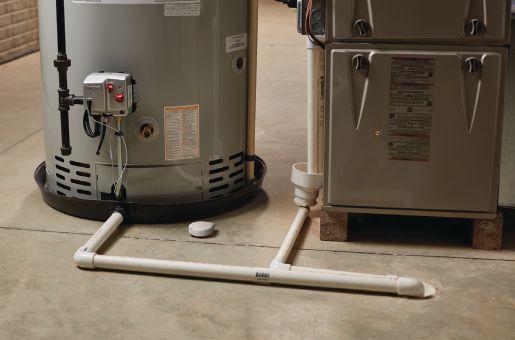
“Nothing is ‘future proof,’ but you can be ‘future ready’,” Bryant says. He also recommends that contractors speak to their customers about equipping their smart homes for years to come. That is, make sure there is cable already installed and ready to handle potential future applications. cc
A longer version of this article is available online. For the full version please search “Installing in the ‘smart home’” at Canadiancontractor.ca
Four lessons for proactively avoiding kitchen and bath renovation pitfalls.
By Steve Maxwell
Kitchen and bathroom renovations offer some of the lowest hanging fruit when it comes to profits because people value these spaces more than most others in a house. This is a good thing in some ways, but as with most good things in life, there’s a corresponding downside. Homeowners will invest more in kitchens and bathrooms, yes, but they also expect more from you as a contractor, too. Sometimes quite a bit more. The trick to earning consistent profits from such work while minimizing pain and trouble comes down to one main thing. You need to deal with trouble before trouble deals with you.
What does this mean in practice? It’s mostly about anticipating the higher likelihood of issues and pickiness than with other projects, then taking proactive steps to minimize the chances that profit-sapping problems will ever happen.
Tip#1: Recognize gender differences
After 40 years of observation, I cannot

think of a single example of a man and woman living in a house together where the woman was not the person in charge of planning, monitoring and quality control of a kitchen and bathroom renovation. No generalization is perfect, but this one is helpful because it’s so widespread. Men and women typically think quite differently and if you don’t accept that potentially controversial statement you’re likely to step into steaming piles of trouble unnecessarily. Women tend to be warier
A contractor friend of mine was the plumber on a very major kitchen renovation at the home of a wealthy and well-loved local businessman in my area. The project had taken months so far, project fatigue had definitely set in, but the end was in sight. The homeowners were hopeful. A long day under the sink meant that my plumber friend forgot to double-check a small plastic nut that was part of the plastic water line going to the ice maker in the fridge. He left at the end of a long day, happy that he was done, only to be woken very early the next morning by a phone call. It was the contractor on the job. He was not happy. That little nut had let go or perhaps was never installed correctly. If you’ve ever wondered how much
Being prepared
than men of being taken advantage of by a contractor, and they usually appreciate detailed explanations that demystify some part of the process or another. If you don’t know how most women like to be treated during a five-figure kitchen or bathroom reno, you will soon find out.
Tip#2: Document detailed parameters
Kitchens and bathrooms have more technical things going on there than
water can come out of a one-by-four-inch plastic line running freely under a kitchen counter all night long, this home was an excellent example. Not only were there inches of standing water on the new kitchen floor, but the water had leaked down and ruined the finished basement underneath. Hopes for completion were dashed, a six-figure insurance claim was made, weeks of tear-out began and a big lesson was learned. Small diligences really do matter. Insurance was the only thing that kept the general contractor and the plumber from going down and never getting back up. You’re a fool if you hire any subcontractor that has not proven they carry a big, strong insurance policy.
other spaces. That’s why documentation and communication is so important. Build a parameter sheet on a simple cloud platform such as Google Docs and work with your client to document everything that’s part of the project ahead of time, especially things like plumbing fixture choices, floor covering options, hardware details and appliance model numbers, among other things. Sharing on the cloud keeps everything current and allows adjustments to be made on the fly and on any phone. I use Google Docs all the time for this and other tasks.
Even the best renovations are disruptive and messy. Most of your clients have never lived through a major kitchen or bath reno and that’s why you need to explain something about the process to them. Keeping clients’ minds at ease is the first and most important part of any smooth job. This comes down to emotional preparation of your clients. Before anything physical happens at all, explain how things will be dirty, noisy, ugly and seemingly catastrophic. No need to worry, though. This is what good renovations look like. Also explain that a complex process like a kitchen or bathroom reno usually involves unexpected things. Everyone needs to have the mental flexibility to pivot as new realities emerge. It’s vital that you have this talk before unexpected realities set in. Mentioning this after trouble arises is worse than not saying anything at all. You don’t want your client to wonder why their idiot contractor didn’t mention the challenges before they happened.
Every major renovation is something like getting married. Both parties involved need to do the right thing for the relationship to work out. There must be a certain amount of selflessness and giving. A written pledge lays out the standards of conduct that both you and the homeowner commit to follow. On your part, this could mean you pledge in writing to be honest in all things and to give this project enough attention to keep progressing and succeeding over time. If an issue arises that will slow the project
down, you promise to mention it right away.
On the client’s side, they need to understand that changes in design and approach must be requested as little as possible. Besides being expensive financially, change orders are also expensive emotionally when tradespeople have to undo their work and redo it in a different (and often not any better) way. Change orders must
only be used as little as possible. Your clients need to understand this ahead of time.
Not every contractor has what it takes to succeed with the demanding work of a high-end kitchen or bathroom job, but for those who prepare themselves properly it can mean a high-end reputation and profitability. Isn’t that why you got into this work in the first place? cc
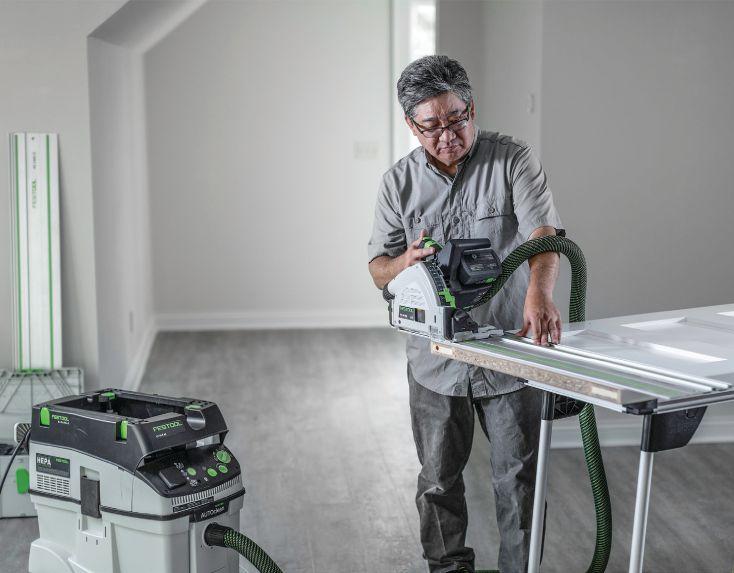
The best cordless track saw now with added protection.
The world’s leading Track Saw now features faster-cutting blades and electronic KickbackStop all while delivering precise, clean, finish-quality cuts.



saniflo.com
Incorporating most of the same features as the Sanicondens Best, Saniflo USA’s new, more powerful Sanicondens Best Flat condensate pump offers a more compact look, a larger volume and the ability to handle multiple mechanical systems. The Sanicondens Best Flat boosts the pH of the acidic condensate before it can be discharged into a drain line, preventing corrosion. The Sanicondens Best Flat is a two-in-one condensate pump used to neutralize and pump condensate from condensing boilers, HVAC systems and water heater systems. It is designed for power and quiet operation with many standard features. The Sanicondens Best Flat will pump condensate waste up to 15 feet in height and/or 150 feet away from a soil stack. This two-quart-capacity condensate pump comes equipped with all the necessary hardware for easy installation. It can be installed on top of a flat surface or mounted on a wall. New technology allows for the neutralizer and condensate pump to be built into one system creating a less expensive and space saving solution. The Sanicondens Best Flat does this

by raising the the pH levels from condensate being produced by appliances up to 500,000 BTU/hour input. The inside of the Sanicondens Best Flat includes a float mechanism, which starts and stops the unit and the motor that drives the pump. When the condensate enters the Sanicondens Best Flat through a side inlet or through the inlets on top of the enclosure, the motor starts. Water enters the chamber and is pumped away through the neutralizing agent into the sanitary sewer. Once the water is discharged and the water level in the container goes down, the float deactivates the unit until water enters the unit again. A normal operating cycle for the Sanicondens Best Flat can be as short as three to five seconds, depending upon the discharge pipe run configuration; power consumption is therefore minimal. The discharge connection of the unit comes equipped with a non-return valve, which prevents back flow into the unit. The powerful pumping unit can be floor- or wall-mounted. It comes ready to install with connections to an external overflow, shut-off switch or alarm system.

The Noritz Connect system works with a downloadable app to give homeowners mobile control of their Noritz tankless water heater. Heater functions are controlled wirelessly using a full-featured app. Homeowners and contractors can get alerts and reminders for fast and proactive maintenance. Users can track usage over time with generated charts. The adapter, which operates on a 2.4 GHz frequency band and plugs easily into a connection port on the heater unit, can be installed both indoors or outdoors. The unit can be extended up to 300 feet by splicing the cord and using 18-gauge wire to extend it to the appropriate length. A status LED readout on the front cover indicates current system status. The adapter is compatible with most current Noritz models, but not the NC380, NRCP or CB (combi).
moen.ca
Moen has expanded its Flo smart water security system, giving homeowners more power to control, conserve and monitor the water that flows through their homes – including the ability to help stop leaks before they start. The Flo smart water shutoff includes a leak detection and water monitoring device that’s installed on the water lines going into the home and can automatically turn off the water to the home if a leak or risk are detected. The shutoff provides automated water security by monitoring water pressure, flow rate and ambient temperature, while running daily health tests to check for leaks and other abnormalities. If the shutoff senses a

americanstandard.ca
American Standard has engineered touchless toilets to make the most popular seat in the house a more hygienic experience. The new Studio and Cadet touchless flush toilets combine the Cadet flushing system and reliable no-touch flush operation. Spending more time at home over the past year has caused people to take a hard look at some of the spaces harmful germs may be lurking in their own homes. American Standard has answered their calls for a solution by engineering products that minimize germs spread on surfaces. Requiring a simple wave of the hand to trigger superior flushing power, families can avoid germs that linger on the toilet handle without sacrificing the performance they expect. The user-friendly sensor module can be placed on the toilet tank or the wall for easy access to flush as the user leaves the room and comes with a pushbutton manual flush option to ensure continual operation. The WaterSense-certified flushing technology uses 20 percent less water than regular toilets, with a water-saving 4.8 litres per flush. American Standard’s EverClean surface inhibits the growth of stain- and odour-causing bacteria, mould and mildew and the smooth, slab-sided bowl design makes cleaning a breeze. Designed with a concealed trap, the elongated bowl models provide comfortable access and use with a slow-close seat to eliminate slamming.
home has a leak or is at risk, it will alert the homeowner so they can take action through the app, or the device can be set to close the water valve automatically and help prevent catastrophic damage. If a homeowner has both the smart water shutoff and the U Smart faucet – Moen’s connected kitchen faucet featuring appbased, voice-activated technology – the products will be able to work together to help prevent a catastrophic water event. For example, in the case of extreme cold temperatures, a homeowner can use the Moen app to turn off water to the home and purge the water lines with one click to help prevent water damage or a burst pipe.

Bob, owner of a fairly large renovation contractor with around 75 employees, is relieved to see the light at the end of the pandemic tunnel. By paying careful attention to public health guidelines, his company has managed to avoid anyone catching COVID. He’s had to listen to some grumbling about masking and work has certainly been slowed in the periods where his workers couldn’t enter clients’ homes. Coupled with the issues getting building materials, his business is down a bit despite the very strong demand for his services. Bob is anxious to return to business as usual and to be able to pick up the pace of work. He understands that vaccination is the best way to do this, as it will allow workers to work close together again and office staff to return to the office without fear of creating an outbreak that might endanger lives and generate worker’s compensation claims. He also wants to be able to reassure his clients that his workers are vaccinated and pose little or no threat to their health.
But Bob has several workers who are skeptical about vaccines and haven’t gotten the shot. He’s tried circulating the best information he can find about vaccine safety and encouraging his staff to get vaccinated, but there are still a few holdouts. Persuasion does not appear to be working. The prevailing attitude among the unvaccinated appears to be that since they are young and healthy and have little to fear from COVID, they should not be forced to accept a medicine they don’t feel they need. Especially since everyone else is vaccinated and the chances of them causing an outbreak are minimal.
Bob understands that, as a matter of law, he’s on very shaky ground making vaccination any kind of condition of employment. But he wants this pandemic over with and his company to return to normal operation.

Mary from Dale Rose Country Homes could relate to our July/August Dilemma, “Misogyny Mahem,” and sent the winning response below. Like several of our respondents, she emphasizes training for the staff to raise awareness of the company’s expectations for behaviour on job sites. Check out the Voices section on page 10 for more of the excellent answers we received.
I am the vice-president and general manager of a small custom homebuilding company and have experienced much of what Allison describes. I personally have not had much issue directly but have certainly heard about the challenges some women face in a mostly male industry. Allison is correct in saying she has not had any problem because she was the woman in a position of authority. This incident, however, has to do with a customer. It might be exaggerated but that is not the point. It should not happen!
I would suggest a direct conversation with the employee and get his side of the story. I would then expect him to give the rest of the team an accounting and some sensitivity advice and training. He has caused an embarrassment to the professionalism of the team! He should then make a direct apology to the customer.

1. Mandate vaccination as a condition of employment and dare the unvaccinated to launch a successful employment rights case. It’s not clear they would win.
2. Drop the whole issue and let the unvaccinated work with the vaccinated understanding the chances of anyone vaccinated getting very ill remain low. If the unvaccinated get sick, well, that was their choice.
3. Redouble efforts to persuade the unvaccinated, perhaps offering some kind of bonus or perk to anyone showing him proof of vaccination.
4. Make restrictions that apply to the unvaccinated but not the vaccinated – they have to continue to mask and practice distancing, for instance.
5. Something else?
If you have a solution to Bob’s dilemma, email your entry to pflannery@ annexbusinessmedia.com and put “Bob’s Dilemma” in the subject line. Please don’t post your response to the comments on the Dilemma post on our website.
Entries close October 18. The winner will be announced in our Nov/Dec issue.

Great approach, Mary! Enjoy your





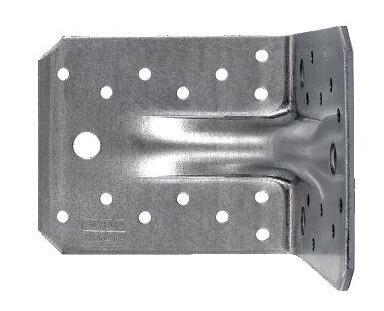
Code-listed fasteners. Concrete-anchoring adhesives. Concealed connectors, brackets and splines. Simpson Strong-Tie ® mass timber structural solutions give you maximum strength and design flexibility. With our team of expert engineers, ongoing technical support and a nationwide supply network that delivers exactly what you need, when you need it — you can be sure that your mass timber projects are stronger, faster and easier than ever.
To learn more about our innovative solutions, see our Connectors & Fasteners for Mass Timber Construction catalog at strongtie.com/masstimber





is a breakthrough product which can be used to prime over existing stains left by mould, mildew, moss, fungi and any other odour causing bacteria*. *This product contains an mildewcide to prevent any growth on the paint film only. The Mould Stop Primer is ideal for non-porous interior and exterior surfaces such as drywall, concrete, masonry, painted metal and non-porous wood.
www.rustoleum.ca/zinsser